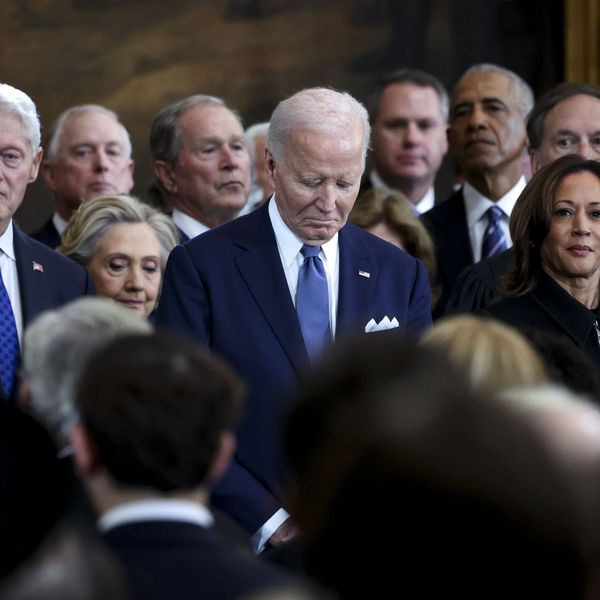Nuclear abolition is for dreamers. That is the "realist" assessment of the ever-slowing movement to eliminate nuclear weapons from the planet. Despite treaty obligations to the contrary, US planners take for granted the permanent legitimacy of the nuclear arsenal, and, therefore, the necessity of enhancing it with next-generation weapons. This assumption undergirds the determination of other nations either to maintain their nukes, or, if they have none, to acquire them. Here is what keeps the Iran crisis simmering, and ignites future crises with other nuclear wannabes. Only a restoration of the goal of universal nuclear abolition as an achievable program of realpolitik will avert coming catastrophe.
A model for such restoration is right in front of us -- the success of the century-old movement to eliminate chemical weapons. That project has evolved so slowly that it is hardly noticed. Yet, with the full abolition of chemical weapons in sight, it should be celebrated as an astonishing triumph of the dream over "realism."
In the beginning, the problem was defined quite simply as "poison." In the early 20th century, humans already felt as though they were being dragged by new weapons technologies into realms of exile where mere survival could itself seem like treason. They resisted by focusing rejection on "poisonous weapons," and ordered them outlawed with the Hague Convention of 1907. That prohibition did not stop both sides in World War I from using asphyxiating gas (the Germans beginning at Ypres in the spring of 1915, the British at Loos the following fall). Poison gas defined the nightmare of that war, and though relatively few combatants were killed by it (less than 100,000), the grotesque suffering of the many gassed casualties (more than a million) registered powerfully on the European imagination. Perhaps a civilization grown hardened to the sight of spilt blood could not abide the sound of ravaged lungs gasping for air.
Immediately after the war, the movement to ban gas resumed. In 1925, gas was indeed outlawed by the Geneva Convention, but realists always knew better (which explains why the US Senate ratified that treaty only in 1975). "That gas is a legitimate weapon of war," a British commission had concluded in 1919, is beyond a "shadow of doubt . . . for history shows that in no case has a weapon which has proved successful in war been abandoned." Assumptions about the inevitability of weaponized gas prompted Britain, in 1939, both to stockpile the banned substance and to distribute gas masks to its citizens. Yet, for all the barbarities of World War II, gas, including newly developed nerve agents, was hardly used as a weapon in Europe (German use of it in death camps was in its own category and the Japanese used it in Asia, although rarely against Allied forces). Such restraint was grounded more in fear of retaliation than in humanism.
Once nuclear weapons were introduced in 1945, all devils were loosed, and both sides in the Cold War accumulated vast stocks of weaponized poison, now designated as "chemical." Though the mushroom cloud dominated nightmares, multiple scenarios for civilization-ending mass destruction became possible. Chemical weapons, having been made morally acceptable by the relatively even more heinous nukes, had come into their own by the time Ronald Reagan and Mikhail Gorbachev tried to call the whole business off. At Geneva and Reykjavik, they set their sights on eliminating nuclear weapons by the year 2000 -- a purpose that failed. But with chemical weapons they began to succeed. (Saddam Hussein, against both Iran and his own people, was showing that chemical weapons could still actually be used -- and to what dread effect.)
In 1990, Gorbachev and George H.W. Bush signed a bilateral treaty agreeing to begin the destruction of chemical weapons stockpiles, and in 1993, the global Chemical Weapons Convention was agreed to -- a realization of the dream first articulated at the Hague and Geneva nearly a century before. The 1993 convention, outlawing chemical weapons, has been ratified by almost every nation on Earth. Stockpiles and production facilities remain, but are being reduced and closed. Chemical weapons are being destroyed. Their legitimacy has been entirely removed, their permanence rejected. The poison gas realists of 1919 have been proven wrong. Now to do the same with the nuclear realists of 2008.


